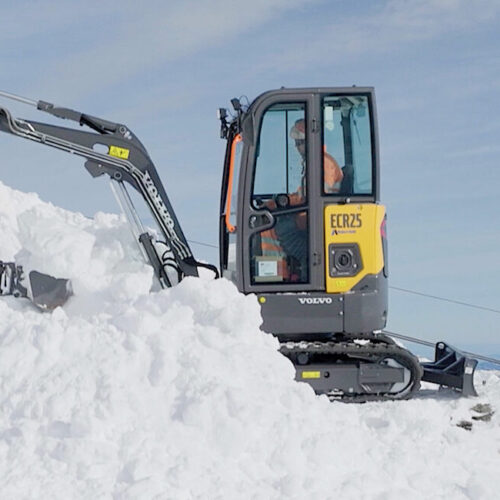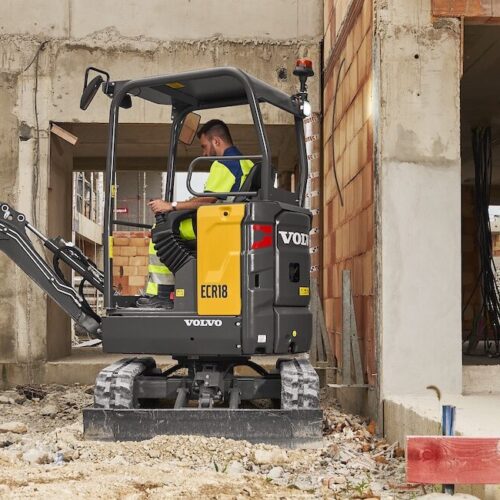AEM’S The Future of Building Report: Our Take
The Association of Equipment Manufacturers (AEM) recently released a whitepaper detailing the drivers that influence how the construction industry could transform over the next 10 years in North America — […]
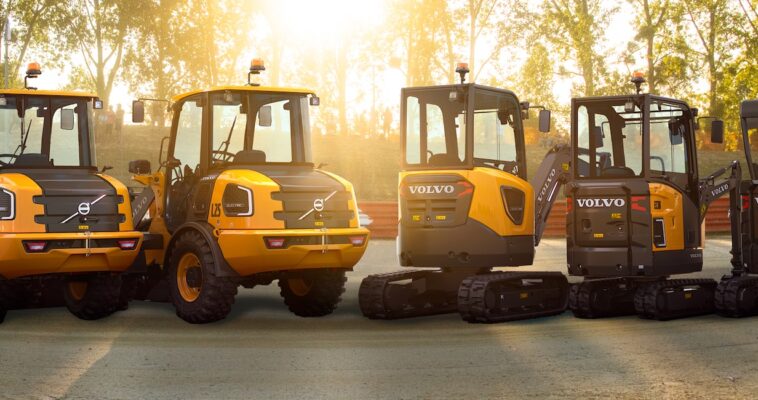
The Association of Equipment Manufacturers (AEM) recently released a whitepaper detailing the drivers that influence how the construction industry could transform over the next 10 years in North America — it’s called The Future of Building, and Volvo was a presenting co-sponsor. I was part of the AEM Vision Team that helped identify the trends included in this white paper and contributed our expertise to its development.
The report lays out a broad spectrum of emerging trends, from the increased regulation of carbon-based fuels and the electrification of heavy equipment to the ever-increasing need for cybersecurity. The report presents eye-opening statistics with links to supporting articles and documents that all point to the need for the construction industry to transform the way it currently functions.
In many ways, that transformation is already happening. Below are some of the ways we here at Volvo are making a difference for several of the trends covered in the report.
Increased Regulation of Carbon-Based Fuels Spurs Adoption of Alternative Power Solutions
According to the report, “the U.S. aims to drastically reduce greenhouse gas (GHG) pollution by 2030 (50-52% reduction from 2005 levels). [As a result,] dramatic changes are already taking place in many industries.”
Some of these changes are regionally focused. California, for example, is the most progressive state in terms of low-or zero-emissions vehicle requirements, but more and more states are following suit. For instance, 14 states plus Washington, D.C., (so far) have all adopted California’s low-emission and zero-emission vehicle regulations — but this is just the start. California is also setting the trend in off-road vehicle and equipment requirements, and the same list of states is likely to follow suit.
Staying ahead of regulations is a big task for private businesses, municipalities, states and more. Continuous education and awareness are vital to help these entities ensure fleet ratios remain compliant. It’s one reason we continue to share educational content around electric heavy equipment and fleet integration to help companies and government entities make timely, informed decisions.
Compact Equipment Trends Electric
The report notes that “the trend toward electrification will largely be driven by ongoing efforts to decarbonize” and “as the reliability of equipment becomes validated after reaching market, more construction companies will look to electrification as a way to not only meet regulatory and social pressures, but also reduce operating costs.”
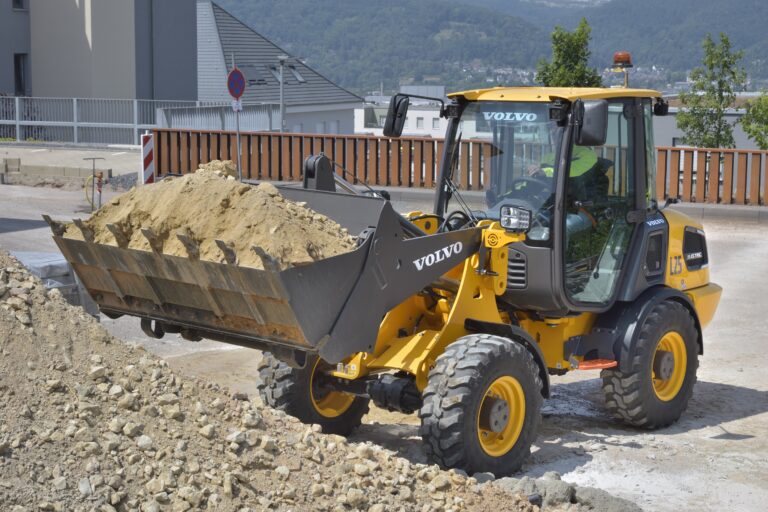
Here at Volvo, we feel we have a bit of a jump start in the electrification of construction equipment. Volvo was the first construction equipment manufacturer to commit to an electric future for its compact machine range — stopping new diesel engine development of mini excavator models globally from the EC15 to EC27 and compact front end loaders from the L20 to L28. The L25 Electric wheel loader and ECR25 Electric excavator were the first to market, and now three additional models have been added to the Volvo electric line up.
We’re also working to expand beyond our electric compact line. Our 20-ton EC230 Electric excavator will soon arrive in North America for demonstrations, which is a significant advancement in the electrification of larger construction equipment.
If you’ve been able to attend some of the recent commercial vehicle and equipment tradeshows like ACT Expo 2022, you’re likely seeing more and more construction equipment manufacturers showcasing their electromobility products and capabilities. As a leader in construction equipment electromobility, exhibiting at ACT Expo was a natural fit for us, and we’ll likely exhibit at similar shows in the future.
Connectivity Leads to Jobsite Transformation
According to the report, “Real-time visibility into machine utilization, diagnostic information and performance helps construction fleets improve asset management, reduce fuel consumption, increase safety and improve preventive maintenance scheduling.”
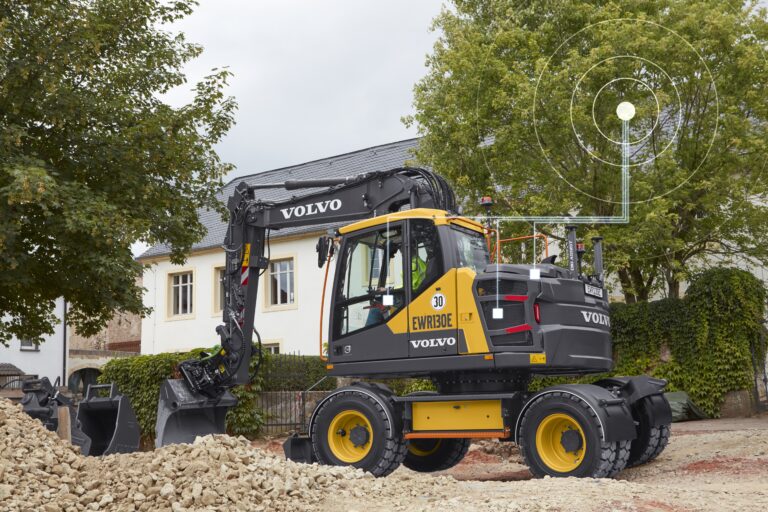
It’s a big reason why we took our tried-and-true CareTrack telematics program and built on it to offer ActiveCare Direct, our 24/7 telematics monitoring and fleet utilization service. Through ActiveCare Direct, we monitor things like excessive machine idle times that burn fuel unnecessarily to help companies train their operators to eliminate these costly scenarios. We also monitor machines and notify customers (and their dealers) if a critical issue is likely to occur. This allows them to collaborate and actively address the issue before it becomes a significant machine down situation.
The goal of programs like ActiveCare Direct is to help customers proactively cut costs and fuel consumption, increase customer production rates, and provide training advice to ensure machines are being utilized in the safest, most efficient manner.
Construction Data Will Reveal Its Value
According to the report, “Over the next 10 years, as connectivity improves and jobsite IoT devices become commonplace, an abundance of construction-related data will be generated.”
The generation of this data is exactly how our Uptime Center here in Shippensburg monitors machines to help customers across North America prevent downtime, cut costs and help keep their crews safe. In addition to real-time insights, the data also allows us to provide customers monthly machine reports to spot trends that can help them improve efficiency, uptime and more.
It’s also what’s driving the evolution of the construction industry, with emerging offers like connected insurance that allow companies to offer customizable insurance packages for heavy construction equipment that are built on-demand and in real time. That’s only possible through machine connectivity and the data that’s collected.
Pathway Toward Autonomous Machinery
The report states that “construction companies will embrace automation over the next 10 years because it will enable them to solve the safety, labor, efficiency and productivity challenges that they are expected to overcome.”
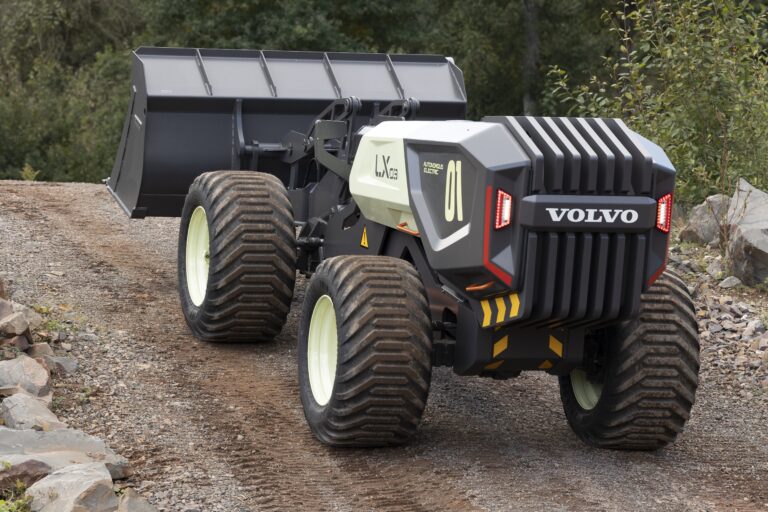
We agree. As I mentioned earlier, Volvo has been hard at work for decades designing electric construction equipment that can not only transform current jobsites, but also open possibilities for all-new applications for heavy equipment. Autonomous solutions open those possibilities even further.
You can get a glimpse of the some of the advanced autonomous construction and mining solutions we’ve been working on for years to better understand what we’re developing and how these machines can be used in the future on evolving jobsites.
The trends and solutions I’ve elaborated on represent only a fraction of the efforts globally to meet sustainability goals and help transform the construction industry into one that helps us build the world around us in a cleaner, more responsible way. It’s a big effort — but it’s one we’re happy to help take the lead on.
I encourage you to download and read AEM’s The Future of Building white paper to learn more about the 10 trends that will have a significant impact on construction. These are exciting times for our industry.
Categories: Construction Equipment, Electric Equipment
